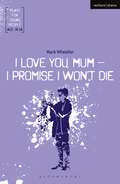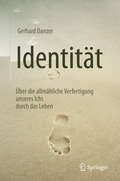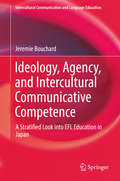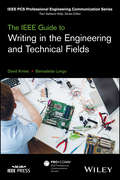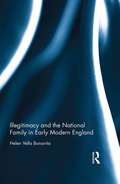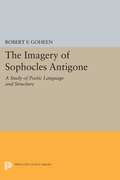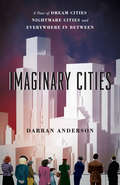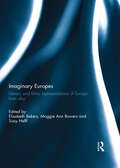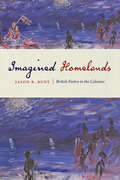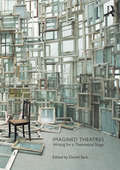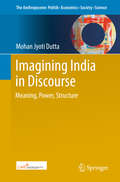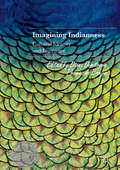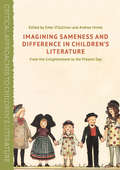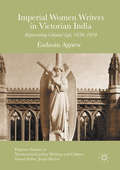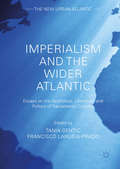- Table View
- List View
I Love You, Mum - I Promise I Won't Die (Plays for Young People)
by Mark WheellerI'd had a conversation specifically with Dan about ecstasy. It's one of the things you do as a parent, isn't it? Wear your helmet when you're out on your bike, you know, don't take drugs. To be honest, I was more worried about him being safe on his bike than at a party with his friends.The words of the title are the last ones spoken by sixteen-year-old Daniel Spargo-Mabbs to his mother. One evening in January 2014, Daniel's parents thought he was going to a friend's house. He actually attended an illegal rave and later died after taking MDMA. That fateful evening is told through the words of his school friends and family, divided into two hard-hitting acts in Mark Wheeller's verbatim play.I Love You, Mum - I Promise I Won't Die was commissioned by the charity set up in Daniel's memory to raise awareness about the danger of party drugs. It is a fast-paced, tragic, vibrant piece of verbatim theatre, which should engage teenage readers, audiences and performers alike.
Identität: Über die allmähliche Verfertigung unseres Ichs durch das Leben
by Gerhard DanzerDas Thema Identität ist wahrscheinlich so alt wie die Menschheit, und die Frage nach dem Wer oder Was unserer Existenz hat wohl die Menschen schon vor Jahrtausenden bewegt.Ausgehend von den vielen Spielarten der Identitätssuche verfolgt dieses Buch die diversen Identitäts- und Lebensmuster; daraus erfolgt eine kritische Reflexion des Begriffs der Identität und die Frage, inwiefern wir überhaupt von uns als einem identischen, sich stets gleichbleibenden Wesen sprechen können. es werden philosophische und psychologische Beiträge zur Identitätssuche vorgestellt und verschiedene kulturelle Richtungen und Strategien wie Aufklärung, Bildung, Erziehung, Tiefenpsychologie dazu befragt.Im letzten Teil des Buchs werden einige literarische Beiträge zur Identitätssuche erörtert - anhand von bekannten Werken wird gezeigt, wie Gestalten energisch um ihre Identität ringen und an dieser Aufgabe (beinahe) scheitern.
Ideology, Agency, and Intercultural Communicative Competence: A Stratified Look into EFL Education in Japan (Intercultural Communication and Language Education)
by Jeremie BouchardAssociated with an important epistemological shift from language proficiency to language criticality in applied linguistic research, this book provides a sociological perspective on foreign language education in Japan. By employing ethnographic methods to investigate the relationship between three core analytical elements – foreign language education geared towards the development of learners’ intercultural communicative competence; nihonjinron and native-speakerism as potentially constraining ideological forces; and EFL practices observed at four Japanese junior high schools – the author not only shares valuable insights into how English is taught and learned in a stratum of the Japanese EFL system which has received limited attention from researchers over the years, but also clarifies the fundamental and complex changes currently taking place in the Japanese EFL landscape. This multi-faceted book also calls for greater consideration in postmodern ideology critique for the stratified nature of social processes as well as the material conditions and underlying generative mechanisms involved in the production and consumption of (including resistance to) ideological discourse. Accordingly, it outlines several challenges shaping ideology research in educational settings, and responds by developing a realist-oriented theoretical and methodological approach to address these challenges. This book serves as a unique point of reference for the study of parallel nationalist discourses embedded in foreign language education systems around the world.
The IEEE Guide to Writing in the Engineering and Technical Fields (IEEE PCS Professional Engineering Communication Series)
by David Kmiec Bernadette LongoHelps both engineers and students improve their writing skills by learning to analyze target audience, tone, and purpose in order to effectively write technical documents This book introduces students and practicing engineers to all the components of writing in the workplace. It teaches readers how considerations of audience and purpose govern the structure of their documents within particular work settings. The IEEE Guide to Writing in the Engineering and Technical Fields is broken up into two sections: “Writing in Engineering Organizations” and “What Can You Do With Writing?” The first section helps readers approach their writing in a logical and persuasive way as well as analyze their purpose for writing. The second section demonstrates how to distinguish rhetorical situations and the generic forms to inform, train, persuade, and collaborate. The emergence of the global workplace has brought with it an increasingly important role for effective technical communication. Engineers more often need to work in cross-functional teams with people in different disciplines, in different countries, and in different parts of the world. Engineers must know how to communicate in a rapidly evolving global environment, as both practitioners of global English and developers of technical documents. Effective communication is critical in these settings. The IEEE Guide to Writing in the Engineering and Technical Fields Addresses the increasing demand for technical writing courses geared toward engineers Allows readers to perfect their writing skills in order to present knowledge and ideas to clients, government, and general public Covers topics most important to the working engineer, and includes sample documents Includes a companion website that offers engineering documents based on real projects The IEEE Guide to Engineering Communication is a handbook developed specifically for engineers and engineering students. Using an argumentation framework, the handbook presents information about forms of engineering communication in a clear and accessible format. This book introduces both forms that are characteristic of the engineering workplace and principles of logic and rhetoric that underlie these forms. As a result, students and practicing engineers can improve their writing in any situation they encounter, because they can use these principles to analyze audience, purpose, tone, and form.
The IEEE Guide to Writing in the Engineering and Technical Fields (IEEE PCS Professional Engineering Communication Series)
by David Kmiec Bernadette LongoHelps both engineers and students improve their writing skills by learning to analyze target audience, tone, and purpose in order to effectively write technical documents This book introduces students and practicing engineers to all the components of writing in the workplace. It teaches readers how considerations of audience and purpose govern the structure of their documents within particular work settings. The IEEE Guide to Writing in the Engineering and Technical Fields is broken up into two sections: “Writing in Engineering Organizations” and “What Can You Do With Writing?” The first section helps readers approach their writing in a logical and persuasive way as well as analyze their purpose for writing. The second section demonstrates how to distinguish rhetorical situations and the generic forms to inform, train, persuade, and collaborate. The emergence of the global workplace has brought with it an increasingly important role for effective technical communication. Engineers more often need to work in cross-functional teams with people in different disciplines, in different countries, and in different parts of the world. Engineers must know how to communicate in a rapidly evolving global environment, as both practitioners of global English and developers of technical documents. Effective communication is critical in these settings. The IEEE Guide to Writing in the Engineering and Technical Fields Addresses the increasing demand for technical writing courses geared toward engineers Allows readers to perfect their writing skills in order to present knowledge and ideas to clients, government, and general public Covers topics most important to the working engineer, and includes sample documents Includes a companion website that offers engineering documents based on real projects The IEEE Guide to Engineering Communication is a handbook developed specifically for engineers and engineering students. Using an argumentation framework, the handbook presents information about forms of engineering communication in a clear and accessible format. This book introduces both forms that are characteristic of the engineering workplace and principles of logic and rhetoric that underlie these forms. As a result, students and practicing engineers can improve their writing in any situation they encounter, because they can use these principles to analyze audience, purpose, tone, and form.
Illegitimacy and the National Family in Early Modern England
by Helen Vella BonavitaThis study considers the figure of the bastard in the context of analogies of the family and the state in early modern England. The trope of illegitimacy, more than being simply a narrative or character-driven issue, is a vital component in the evolving construction and representation of British national identity in prose and drama of the sixteenth and early seventeenth century. Through close reading of a range of plays and prose texts, the book offers readers new insight into the semiotics of bastardy and concepts of national identity in early modern England, and reflects on contemporary issues of citizenship and identity. The author examines play texts of the period including Bale's King Johan, Peele's The Troublesome Reign of John, and Shakespeare's King John, Richard II, and King Lear in the context of a selection of legal, religious, and polemical texts. In so doing, she illuminates the extent to which the figure of the bastard and, more generally the trope of illegitimacy, existed as a distinct discourse within the wider discursive framework of family and nation.
Illegitimacy and the National Family in Early Modern England
by Helen Vella BonavitaThis study considers the figure of the bastard in the context of analogies of the family and the state in early modern England. The trope of illegitimacy, more than being simply a narrative or character-driven issue, is a vital component in the evolving construction and representation of British national identity in prose and drama of the sixteenth and early seventeenth century. Through close reading of a range of plays and prose texts, the book offers readers new insight into the semiotics of bastardy and concepts of national identity in early modern England, and reflects on contemporary issues of citizenship and identity. The author examines play texts of the period including Bale's King Johan, Peele's The Troublesome Reign of John, and Shakespeare's King John, Richard II, and King Lear in the context of a selection of legal, religious, and polemical texts. In so doing, she illuminates the extent to which the figure of the bastard and, more generally the trope of illegitimacy, existed as a distinct discourse within the wider discursive framework of family and nation.
Imagery of Sophocles Antigone
by Robert Francis GoheenA systematic investigation of a Greek text, employing the techniques of the "new criticism." The book is a major contribution to the study of Sophocles and of Greek drama.Originally published in 1951.The Princeton Legacy Library uses the latest print-on-demand technology to again make available previously out-of-print books from the distinguished backlist of Princeton University Press. These editions preserve the original texts of these important books while presenting them in durable paperback and hardcover editions. The goal of the Princeton Legacy Library is to vastly increase access to the rich scholarly heritage found in the thousands of books published by Princeton University Press since its founding in 1905.
Imaginary Cities: A Tour of Dream Cities, Nightmare Cities, and Everywhere in Between
by Darran AndersonFor as long as humans have gathered in cities, those cities have had their shining—or shadowy—counterparts. Imaginary cities, potential cities, future cities, perfect cities. It is as if the city itself, its inescapable gritty reality and elbow-to-elbow nature, demands we call into being some alternative, yearned-for better place. This book is about those cities. It’s neither a history of grand plans nor a literary exploration of the utopian impulse, but rather something different, hybrid, idiosyncratic. It’s a magpie’s book, full of characters and incidents and ideas drawn from cities real and imagined around the globe and throughout history. Thomas More’s allegorical island shares space with Soviet mega-planning; Marco Polo links up with James Joyce’s meticulously imagined Dublin; the medieval land of Cockaigne meets the hopeful future of Star Trek. With Darran Anderson as our guide, we find common themes and recurring dreams, tied to the seemingly ineluctable problems of our actual cities, of poverty and exclusion and waste and destruction. And that’s where Imaginary Cities becomes more than a mere—if ecstatically entertaining—intellectual exercise: for, as Anderson says, “If a city can be imagined into being, it can be re-imagined.” Every architect, philosopher, artist, writer, planner, or citizen who dreams up an imaginary city offers lessons for our real ones; harnessing those flights of hopeful fancy can help us improve the streets where we live. Though it shares DNA with books as disparate as Calvino’s Invisible Cities and Jane Jacobs’s Death and Life of Great American Cities, there’s no other book quite like Imaginary Cities. After reading it, you’ll walk the streets of your city—real or imagined—with fresh eyes.
Imaginary Cities: A Tour of Dream Cities, Nightmare Cities, and Everywhere in Between
by Darran AndersonFor as long as humans have gathered in cities, those cities have had their shining—or shadowy—counterparts. Imaginary cities, potential cities, future cities, perfect cities. It is as if the city itself, its inescapable gritty reality and elbow-to-elbow nature, demands we call into being some alternative, yearned-for better place. This book is about those cities. It’s neither a history of grand plans nor a literary exploration of the utopian impulse, but rather something different, hybrid, idiosyncratic. It’s a magpie’s book, full of characters and incidents and ideas drawn from cities real and imagined around the globe and throughout history. Thomas More’s allegorical island shares space with Soviet mega-planning; Marco Polo links up with James Joyce’s meticulously imagined Dublin; the medieval land of Cockaigne meets the hopeful future of Star Trek. With Darran Anderson as our guide, we find common themes and recurring dreams, tied to the seemingly ineluctable problems of our actual cities, of poverty and exclusion and waste and destruction. And that’s where Imaginary Cities becomes more than a mere—if ecstatically entertaining—intellectual exercise: for, as Anderson says, “If a city can be imagined into being, it can be re-imagined.” Every architect, philosopher, artist, writer, planner, or citizen who dreams up an imaginary city offers lessons for our real ones; harnessing those flights of hopeful fancy can help us improve the streets where we live. Though it shares DNA with books as disparate as Calvino’s Invisible Cities and Jane Jacobs’s Death and Life of Great American Cities, there’s no other book quite like Imaginary Cities. After reading it, you’ll walk the streets of your city—real or imagined—with fresh eyes.
Imaginary Cities: A Tour of Dream Cities, Nightmare Cities, and Everywhere in Between
by Darran AndersonFor as long as humans have gathered in cities, those cities have had their shining—or shadowy—counterparts. Imaginary cities, potential cities, future cities, perfect cities. It is as if the city itself, its inescapable gritty reality and elbow-to-elbow nature, demands we call into being some alternative, yearned-for better place. This book is about those cities. It’s neither a history of grand plans nor a literary exploration of the utopian impulse, but rather something different, hybrid, idiosyncratic. It’s a magpie’s book, full of characters and incidents and ideas drawn from cities real and imagined around the globe and throughout history. Thomas More’s allegorical island shares space with Soviet mega-planning; Marco Polo links up with James Joyce’s meticulously imagined Dublin; the medieval land of Cockaigne meets the hopeful future of Star Trek. With Darran Anderson as our guide, we find common themes and recurring dreams, tied to the seemingly ineluctable problems of our actual cities, of poverty and exclusion and waste and destruction. And that’s where Imaginary Cities becomes more than a mere—if ecstatically entertaining—intellectual exercise: for, as Anderson says, “If a city can be imagined into being, it can be re-imagined.” Every architect, philosopher, artist, writer, planner, or citizen who dreams up an imaginary city offers lessons for our real ones; harnessing those flights of hopeful fancy can help us improve the streets where we live. Though it shares DNA with books as disparate as Calvino’s Invisible Cities and Jane Jacobs’s Death and Life of Great American Cities, there’s no other book quite like Imaginary Cities. After reading it, you’ll walk the streets of your city—real or imagined—with fresh eyes.
Imaginary Cities: A Tour of Dream Cities, Nightmare Cities, and Everywhere in Between
by Darran AndersonFor as long as humans have gathered in cities, those cities have had their shining—or shadowy—counterparts. Imaginary cities, potential cities, future cities, perfect cities. It is as if the city itself, its inescapable gritty reality and elbow-to-elbow nature, demands we call into being some alternative, yearned-for better place. This book is about those cities. It’s neither a history of grand plans nor a literary exploration of the utopian impulse, but rather something different, hybrid, idiosyncratic. It’s a magpie’s book, full of characters and incidents and ideas drawn from cities real and imagined around the globe and throughout history. Thomas More’s allegorical island shares space with Soviet mega-planning; Marco Polo links up with James Joyce’s meticulously imagined Dublin; the medieval land of Cockaigne meets the hopeful future of Star Trek. With Darran Anderson as our guide, we find common themes and recurring dreams, tied to the seemingly ineluctable problems of our actual cities, of poverty and exclusion and waste and destruction. And that’s where Imaginary Cities becomes more than a mere—if ecstatically entertaining—intellectual exercise: for, as Anderson says, “If a city can be imagined into being, it can be re-imagined.” Every architect, philosopher, artist, writer, planner, or citizen who dreams up an imaginary city offers lessons for our real ones; harnessing those flights of hopeful fancy can help us improve the streets where we live. Though it shares DNA with books as disparate as Calvino’s Invisible Cities and Jane Jacobs’s Death and Life of Great American Cities, there’s no other book quite like Imaginary Cities. After reading it, you’ll walk the streets of your city—real or imagined—with fresh eyes.
Imaginary Europes: Literary and filmic representations of Europe from afar
by Elisabeth Bekers Maggie Ann Bowers Sissy HelffThe 20th century has witnessed crucial changes in our perceptions of Europe. Two World Wars and many regional conflicts, the end of empires and of the Eastern Bloc, the creation and expansion of the European Union, and the continuous reshaping of Europe’s population through emigration, immigration, and globalization have led to a proliferation of images of Europe within the continent and beyond. While Eurocentrism governs current public debates in Europe, this book takes a special interest in literary and cinematographic imaginings of Europe that are produced from more distant, decentred, or peripheral vantage points and across differences of political power, ideological or ethnic affinity, cultural currency, linguistic practice, and geographical location. The contributions to this book demonstrate how these particular imaginings of Europe, often without first-hand experience of the continent, do not simply hold up a mirror to Europe, but dare to conceive of new perspectives and constellations for Europe that call for a shifting of critical positions. In so doing, the artistic visions from afar confirm the significance of cultural imagination in (re)conceptualizing the past, present, and future of Europe. This book was originally published as a special issue of the Journal of Postcolonial Writing.
Imaginary Europes: Literary and filmic representations of Europe from afar
by Elisabeth Bekers, Maggie Ann Bowers and Sissy HelffThe 20th century has witnessed crucial changes in our perceptions of Europe. Two World Wars and many regional conflicts, the end of empires and of the Eastern Bloc, the creation and expansion of the European Union, and the continuous reshaping of Europe’s population through emigration, immigration, and globalization have led to a proliferation of images of Europe within the continent and beyond. While Eurocentrism governs current public debates in Europe, this book takes a special interest in literary and cinematographic imaginings of Europe that are produced from more distant, decentred, or peripheral vantage points and across differences of political power, ideological or ethnic affinity, cultural currency, linguistic practice, and geographical location. The contributions to this book demonstrate how these particular imaginings of Europe, often without first-hand experience of the continent, do not simply hold up a mirror to Europe, but dare to conceive of new perspectives and constellations for Europe that call for a shifting of critical positions. In so doing, the artistic visions from afar confirm the significance of cultural imagination in (re)conceptualizing the past, present, and future of Europe. This book was originally published as a special issue of the Journal of Postcolonial Writing.
Imagined Homelands: British Poetry in the Colonies
by Jason R. RudyImagined Homelands chronicles the emerging cultures of nineteenth-century British settler colonialism, focusing on poetry as a genre especially equipped to reflect colonial experience. Jason Rudy argues that the poetry of Victorian-era Australia, New Zealand, South Africa, and Canada;¢;‚¬;€?often disparaged as derivative and uncouth;¢;‚¬;€?should instead be seen as vitally engaged in the social and political work of settlement. The book illuminates cultural pressures that accompanied the unprecedented growth of British emigration across the nineteenth century. It also explores the role of poetry as a mediator between familiar British ideals and new colonial paradigms within emerging literary markets from Sydney and Melbourne to Cape Town and Halifax. Rudy focuses on the work of poets both canonical;¢;‚¬;€?including Tennyson, Browning, Longfellow, and Hemans;¢;‚¬;€?and relatively obscure, from Adam Lindsay Gordon, Susanna Moodie, and Thomas Pringle to Henry Kendall and Alexander McLachlan. He examines in particular the nostalgic relations between home and abroad, core and periphery, whereby British emigrants used both original compositions and canonical British works to imagine connections between their colonial experiences and the lives they left behind in Europe.Drawing on archival work from four continents, Imagined Homelands insists on a wider geographic frame for nineteenth-century British literature. From lyrics printed in newspapers aboard emigrant ships heading to Australia and South Africa, to ballads circulating in New Zealand and Canadian colonial journals, poetry was a vibrant component of emigrant life. In tracing the histories of these poems and the poets who wrote them, this book provides an alternate account of nineteenth-century British poetry and, more broadly, of settler colonial culture.
Imagined Homelands: British Poetry in the Colonies
by Jason R. RudyImagined Homelands chronicles the emerging cultures of nineteenth-century British settler colonialism, focusing on poetry as a genre especially equipped to reflect colonial experience. Jason Rudy argues that the poetry of Victorian-era Australia, New Zealand, South Africa, and Canada;¢;‚¬;€?often disparaged as derivative and uncouth;¢;‚¬;€?should instead be seen as vitally engaged in the social and political work of settlement. The book illuminates cultural pressures that accompanied the unprecedented growth of British emigration across the nineteenth century. It also explores the role of poetry as a mediator between familiar British ideals and new colonial paradigms within emerging literary markets from Sydney and Melbourne to Cape Town and Halifax. Rudy focuses on the work of poets both canonical;¢;‚¬;€?including Tennyson, Browning, Longfellow, and Hemans;¢;‚¬;€?and relatively obscure, from Adam Lindsay Gordon, Susanna Moodie, and Thomas Pringle to Henry Kendall and Alexander McLachlan. He examines in particular the nostalgic relations between home and abroad, core and periphery, whereby British emigrants used both original compositions and canonical British works to imagine connections between their colonial experiences and the lives they left behind in Europe.Drawing on archival work from four continents, Imagined Homelands insists on a wider geographic frame for nineteenth-century British literature. From lyrics printed in newspapers aboard emigrant ships heading to Australia and South Africa, to ballads circulating in New Zealand and Canadian colonial journals, poetry was a vibrant component of emigrant life. In tracing the histories of these poems and the poets who wrote them, this book provides an alternate account of nineteenth-century British poetry and, more broadly, of settler colonial culture.
Imagined Theatres: Writing for a Theoretical Stage
by Daniel SackImagined Theatres collects theoretical dramas written by some of the leading scholars and artists of the contemporary stage. These dialogues, prose poems, and microfictions describe imaginary performance events that explore what might be possible and impossible in the theatre. Each scenario is mirrored by a brief accompanying reflection, asking what they might mean for our thinking about the theatre. These many possible worlds circle around questions that include: In what way is writing itself a performance? How do we understand the relationship between real performances that engender imaginary reflections and imaginary conceptions that form the basis for real theatrical productions? Are we not always imagining theatres when we read or even when we sit in the theatre, watching whatever event we imagine we are seeing?
Imagined Theatres: Writing for a Theoretical Stage
by Daniel SackImagined Theatres collects theoretical dramas written by some of the leading scholars and artists of the contemporary stage. These dialogues, prose poems, and microfictions describe imaginary performance events that explore what might be possible and impossible in the theatre. Each scenario is mirrored by a brief accompanying reflection, asking what they might mean for our thinking about the theatre. These many possible worlds circle around questions that include: In what way is writing itself a performance? How do we understand the relationship between real performances that engender imaginary reflections and imaginary conceptions that form the basis for real theatrical productions? Are we not always imagining theatres when we read or even when we sit in the theatre, watching whatever event we imagine we are seeing?
Imagining India in Discourse: Meaning, Power, Structure (The Anthropocene: Politik—Economics—Society—Science #14)
by Mohan Jyoti DuttaThe economic liberalization of India, changes in global structures, and the rapid emergence of India on the global landscape have been accompanied by the dramatic rise in popular, public, and elite discourses that offer the promise to imagine India. Written mostly in the future tense, these discourses conceive of India through specific frames of global change and simultaneously offer prescriptive suggestions for the pathways to fulfilling the vision. Both as summary accounts of the shifts taking place in India and in the relationships of India with other global actors as well as roadmaps for the immediate and longer term directions for India, these discourses offer meaningful entry points into elite imaginations of India. Engaging these imaginations creates a framework for understanding the tropes that are mobilized in support of specific policy formulations in economic, political, cultural, and social spheres. Connecting meanings within networks of power and structure help make sense of the symbolic articulations of India within material relationships.
Imagining Indianness: Cultural Identity and Literature
by Diana Dimitrova Thomas De BruijnThis book brings together several important essays examining the interface between identity, culture, and literature within the issue of cultural identity in South Asian literature. The book explores how one imagines national identity and how this concept is revealed in the narratives of the nation and the production of various cultural discourses. The collection of essays examines questions related to the interpretation of the Indian past and present, the meanings of ancient and venerated cultural symbols in ancient times and modern, while discussing the ideological implications of the interpretation of identity and “Indianness” and how they reflect and influence the power-structures of contemporary societies in South Asia. Thus, the book studies the various aspects of the on-going process of constructing, imagining, re-imagining, and narrating “Indianness”, as revealed in the literatures and cultures of India.
Imagining Indianness: Cultural Identity and Literature
by Diana Dimitrova Thomas De BruijnThis book brings together several important essays examining the interface between identity, culture, and literature within the issue of cultural identity in South Asian literature. The book explores how one imagines national identity and how this concept is revealed in the narratives of the nation and the production of various cultural discourses. The collection of essays examines questions related to the interpretation of the Indian past and present, the meanings of ancient and venerated cultural symbols in ancient times and modern, while discussing the ideological implications of the interpretation of identity and “Indianness” and how they reflect and influence the power-structures of contemporary societies in South Asia. Thus, the book studies the various aspects of the on-going process of constructing, imagining, re-imagining, and narrating “Indianness”, as revealed in the literatures and cultures of India.
Imagining Sameness and Difference in Children's Literature: From the Enlightenment to the Present Day (Critical Approaches to Children's Literature)
by Andrea Immel Emer O'SullivanThis book investigates how cultural sameness and difference has been presented in a variety of forms and genres of children’s literature from Denmark, Germany, France, Russia, Britain, and the United States; ranging from English caricatures of the 1780s to dynamic representations of contemporary cosmopolitan childhood. The chapters address different models of presenting foreigners using examples from children’s educational prints, dramatic performances, travel narratives, comics, and picture books. Contributors illuminate the ways in which the texts negotiate the tensions between the Enlightenment ideal of internationalism and discrete national or ethnic identities cultivated since the Romantic era, providing examples of ethnocentric cultural perspectives and of cultural relativism, as well as instances where discussions of child reader agency indicate how they might participate eventually in a tolerant transnational community.
Imperial Women Writers in Victorian India: Representing Colonial Life, 1850-1910
by Éadaoin AgnewThis book is about Victorian women’s representations of colonial life in India. These accounts contributed to imperial rule by exemplifying an idealized middle-class femininity and attesting to the Anglicisation of the subcontinent. Writers described familiarly feminine modes of experience, focusing on the domestic environment, household management, the family, hobbies and pastimes, romance and courtship and their busy social lives. However, this book reveals the extent to which their lives in India bore little resemblance to their lives in Britain and suggests that the acclaimed transportation of the home culture was largely an ideological construct iterated by women writers in the service of the Raj. In this way, they subverted the constraints of Victorian gender discourses and were part of a growing proto-feminism.
Imperial Women Writers in Victorian India: Representing Colonial Life, 1850-1910
by Éadaoin AgnewThis book is about Victorian women’s representations of colonial life in India. These accounts contributed to imperial rule by exemplifying an idealized middle-class femininity and attesting to the Anglicisation of the subcontinent. Writers described familiarly feminine modes of experience, focusing on the domestic environment, household management, the family, hobbies and pastimes, romance and courtship and their busy social lives. However, this book reveals the extent to which their lives in India bore little resemblance to their lives in Britain and suggests that the acclaimed transportation of the home culture was largely an ideological construct iterated by women writers in the service of the Raj. In this way, they subverted the constraints of Victorian gender discourses and were part of a growing proto-feminism.
Imperialism and the Wider Atlantic: Essays on the Aesthetics, Literature, and Politics of Transatlantic Cultures
by Tania Gentic Francisco Larubia-PradoThe essays in this volume broaden previous approaches to Atlantic literature and culture by comparatively studying the politics and textualities of Southern Europe, North America, and Latin America across languages, cultures, and periods. Historically grounded while offering new theoretical approaches, the volume encourages debate on whether the critical lens of imperialism often invoked to explain transatlantic studies may be challenged by the diagonal translinguistic relationships that comprise what the editors term "the wider Atlantic". The essays explore how instances of inverse coloniality, global networks of circulation, and linguistic conceptualizations of nation and identity question dominant structures of power from the nineteenth century to today.
